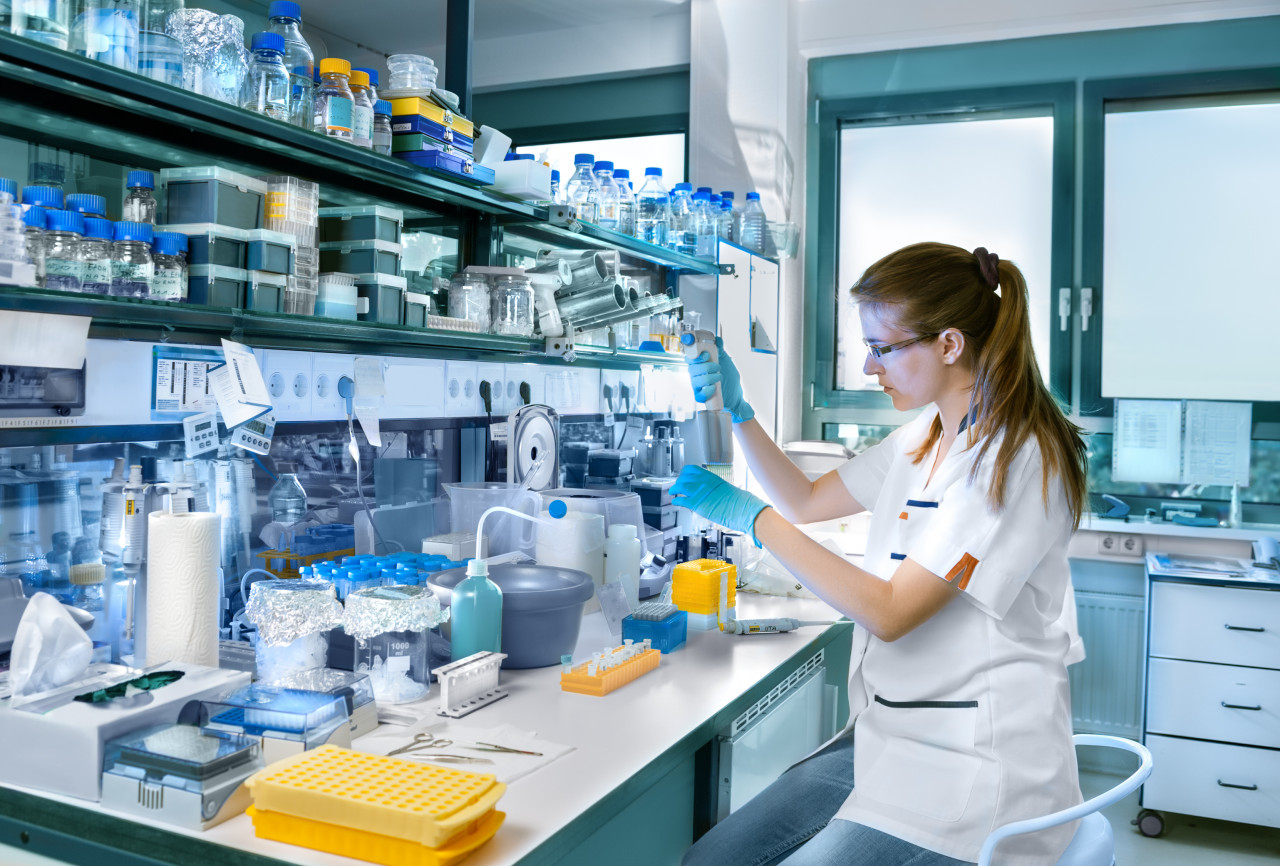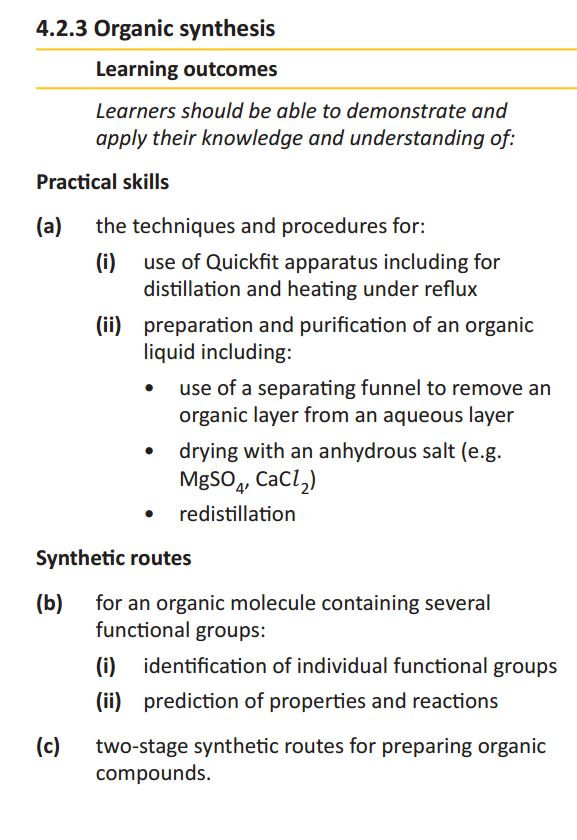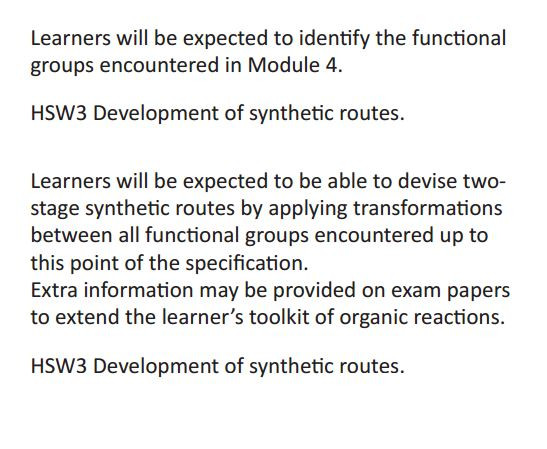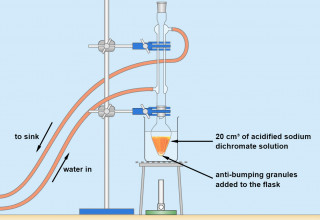Practical techniques in organic chemistry
Synthesis and separation.
In chemistry, reflux is a technique used to heat a reaction mixture for an extended period without losing volatile reactants or solvents
How it works
- The mixture is heated in a flask.
- A condenser is attached vertically to the flask.
- Vapours produced by heating rise into the condenser, where they cool and condense back to liquid.
- The condensed liquid drips back into the reaction flask, allowing continuous heating at the boiling point of the solvent.
Why it's used
- Maintains a constant reaction temperature (the solvent's boiling point).
- Prevents loss of materials through evaporation.
- Speeds up reactions that require prolonged heating.
Distillation is widely used in chemistry for the separation of liquids - examples include refining crude oil, and separating alcohol from fermentation mixtures.
Purification methods.
Recrystallisation is a purification technique used to separate a solid compound from impurities by exploiting differences in solubility.
How it works
- Dissolve the impure solid in a hot solvent in which the desired compound is highly soluble at high temperature but poorly soluble at low temperature.
- Filter hot, if needed, to remove insoluble impurities.
- Cool the solution, causing the desired compound to crystallize out while soluble impurities remain in solution.
- Collect the crystals by filtration and dry them.
Purpose
- To obtain a pure solid from an impure sample.
- Commonly used in organic and inorganic laboratories to purify synthesized products.
In this video Professor Dave explains in some detail how to use this method and why it works.
Synthesis of an Ester
Reflux
Enter your text here ...
Neutralisation
Enter your text here ...
Separation
Enter your text here ...
Drying
Enter your text here ...




